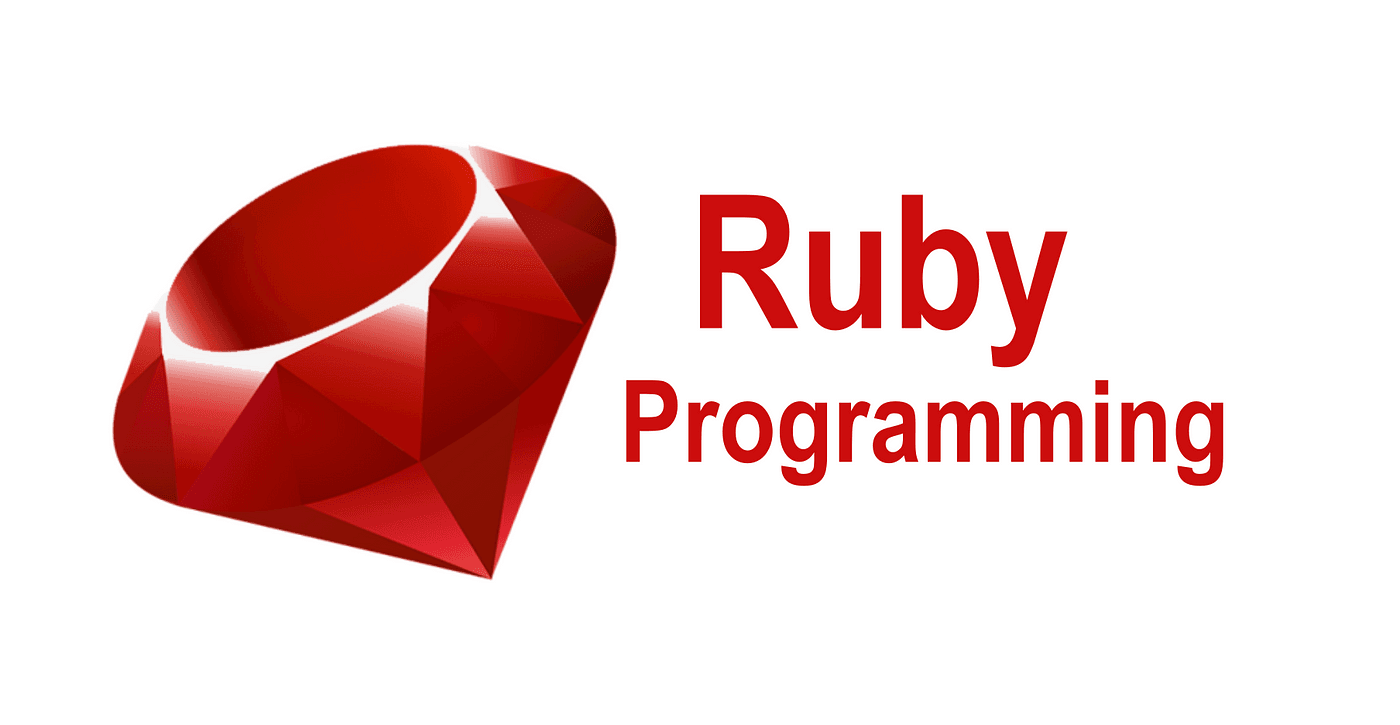In the rapidly evolving world of web development, staying updated with the latest technologies and programming languages is crucial. As we step into 2025, the demand for skilled web developers continues to grow, and choosing the right programming language to learn can significantly impact your career prospects.
In this article, we will explore some of the popular web development languages and help you make an informed decision about which language to learn in 2025.
Top 5 Backend Web Development Languages
1. Python
Python has gained immense popularity in recent years, not only as a general-purpose programming language but also as a web development language. Its simplicity and readability make it an excellent choice for beginners.
Python's versatility allows you to develop both front-end and back-end applications, and it offers several frameworks like Django and Flask for web development. Python is widely used in machine learning and data analysis as well, making it a valuable skill to have in today's tech landscape.
Pros:
- Readability: Python's clean syntax and indentation make it easy to read and write, promoting code maintainability.
- Versatility: Python can be used for a wide range of applications, including web development, data analysis, machine learning, and more.
- Large Ecosystem: Python has a vast collection of frameworks and libraries, such as Django and Flask, which simplify web development tasks.
Cons:
- Performance: Python may not be as performant as some other languages due to its interpreted nature, which can impact high-traffic or resource-intensive applications.
- Global Interpreter Lock (GIL): Python's GIL limits the execution of multiple threads simultaneously, which can hinder performance in certain scenarios.
Use Cases:
- Business Applications;
- Internet of Things (IoT) Applications;
- System Programming;
- Serverless Computing;
- Development of Cloud-Native.
>> Read more about Python:
- Top 10+ Best Python Development Companies In Australia
- Python Developer Salary Worldwide
- What Does A Python Developer Do?

2. Java
Java is a versatile object-oriented programming language that is widely used for developing Android applications, as well as desktop and web applications. It is known for its platform independence and has been a popular choice for programming in various industries for many years. Its stability and widespread adoption by companies make it a strong language to learn.
Pros:
- Platform Independence: Java programs can run on any platform with a Java Virtual Machine (JVM), ensuring cross-platform compatibility.
- Object-Oriented Programming: Java's object-oriented nature allows for modular and reusable code, promoting code organization and maintainability.
- Robustness and Reliability: Java's strong type checking, exception handling, and automatic memory management contribute to creating robust and reliable applications.
- Large Ecosystem: Java has a vast collection of libraries, frameworks, and tools, providing developers with a wide range of resources to expedite development.
- Scalability: Java's scalability makes it suitable for building large-scale enterprise applications that can handle high traffic and extensive functionality.
- Community and Industry Support: Java has a strong community and enjoys wide industry adoption, providing abundant resources, documentation, and support.
Cons:
- Learning Curve: Java has a steeper learning curve compared to some other languages, especially for beginners, due to its complex syntax and concepts.
- Verbosity: Java code tends to be more verbose compared to other languages, requiring more lines of code to accomplish certain tasks.
- Memory Consumption: Java's automatic memory management, while convenient, can lead to higher memory consumption compared to languages with manual memory management.
- Performance: Although Java performance has significantly improved over the years, it may not match the raw speed of languages like C++ for certain low-level or performance-critical applications.
- Startup Time: Java applications can have longer startup times compared to languages with interpreted or just-in-time compiled execution models.
Use Cases:
- Web Development;
- Development of Enterprise Apps;
- Big Data Applications;
- Development of Android Apps.
3. Ruby
Ruby is a dynamic, object-oriented programming language known for its simplicity and readability. It was designed by Yukihiro Matsumoto in the mid-1990s with a focus on human-friendly syntax and productivity. Ruby emphasizes code elegance and developer happiness, aiming to make programming enjoyable and efficient.
Pros:
- Readability and Expressiveness: Ruby's syntax is designed to be easy to read and write, emphasizing natural language-like constructs. This promotes code clarity and reduces the learning curve for new developers.
- Productivity: Ruby's focus on simplicity and expressiveness allows developers to write code quickly and concisely. It promotes a "less is more" approach, enabling faster development cycles.
- Strong Community and Ecosystem: Ruby has a vibrant and supportive community, which contributes to its extensive ecosystem of libraries, frameworks, and tools. Ruby on Rails, a popular web development framework, has significantly contributed to Ruby's ecosystem growth.
- Dynamic Typing and Flexibility: Ruby is dynamically typed, allowing for flexible and agile development. Its dynamic nature enables developers to write code that adapts to changing requirements easily.
- Object-Oriented Nature: Ruby is a fully object-oriented language, treating everything as an object. This promotes modularity, code reuse, and encapsulation, making it well-suited for building complex applications.
Cons:
- Performance: Ruby's interpreted nature can result in slower execution speeds compared to compiled languages like C++ or Go. This can impact performance in resource-intensive or time-critical applications.
- Scalability: Ruby may face challenges with scalability in certain scenarios, particularly with high-concurrency or heavily loaded systems. However, this can often be addressed through optimization techniques and utilizing appropriate tools and infrastructure.
- Memory Usage: Ruby can be memory-intensive due to its dynamic nature and garbage collection mechanisms. It may consume more memory compared to languages with manual memory management.
Use Cases:
- Web Development;
- Scripting and Automation;
- Prototyping and Rapid Development;
- Data Processing and Manipulation.
>> Read more about Ruby:
- An In-Depth Guide for Deploying Ruby App to AWS Lambda
- Top 10 Best Ruby on Rails Gems
- Top 10 Ruby on Rails IDEs for Web Development Projects
- A Guide to Successfully Hiring Ruby on Rails Developers

4. PHP
PHP has been a staple in web development for a long time, and despite some criticisms, it continues to power a significant portion of the web. With frameworks like Laravel and Symfony, PHP offers a robust ecosystem for building scalable and secure web applications. PHP's simplicity and widespread adoption make it a viable choice, especially for content-heavy websites and e-commerce platforms.
Pros:
- Wide Adoption: PHP is one of the most widely used languages for web development, powering numerous popular websites and platforms.
- Easy to Learn: PHP has a relatively low learning curve, making it accessible to beginners and allowing for rapid development.
- Large Ecosystem: PHP has a vast collection of frameworks and libraries, such as Laravel and Symfony, which simplify common web development tasks and promote code reusability.
- Database Integration: PHP has excellent support for database integration, with built-in extensions for popular databases like MySQL and PostgreSQL.
- Server-Side Scripting: PHP is primarily used as a server-side scripting language, allowing developers to embed code within HTML files and dynamically generate web content.
Cons:
- Inconsistencies and Legacy Code: PHP has a long history, resulting in inconsistencies and legacy code that can sometimes lead to less maintainable and secure applications.
- Weak Typing: PHP has weak typing, which can lead to potential type-related bugs and require careful handling of data types.
- Performance: PHP performance can be a concern for high-traffic or resource-intensive applications compared to other languages like Go or Java.
- Security Vulnerabilities: Due to its popularity and history, PHP has faced security vulnerabilities in the past. Proper security practices and framework usage are essential to mitigate risks.
- Lack of Language Design Consistency: PHP's evolution over time has resulted in some inconsistencies in language design, which can affect code readability and maintainability.
Use cases of PHP:
- Development of standalone web apps;
- Development of server-side web apps;
- Building (CMS) systems.
>> Read more: Top 10 PHP Web Development Companies in Vietnam
5. Golang
Go, also known as Golang, is a statically typed, compiled programming language designed by Google. It was created to address the need for a language that provides efficient performance, simplicity, and strong concurrency support.
Go is a programming language that combines the simplicity of syntax similar to C with modern features. It was designed to be efficient, readable, and highly scalable. Go aims to provide a productive and approachable language for building robust software systems.
Here's an overview of Go (Golang), including its definition, pros, cons, and use cases.
Pros:
- Simplicity: Go has a clean and straightforward syntax, making it easy to read, write, and understand. Its simplicity reduces cognitive load, improves code maintainability, and promotes collaboration among developers.
- Concurrency Support: Go has built-in support for concurrent programming with goroutines and channels. Goroutines are lightweight threads that enable concurrent execution, and channels facilitate safe communication and synchronization between goroutines. This makes it easier to write efficient and scalable concurrent applications.
- Performance: Go's compiled nature allows it to produce highly performant executables. It provides efficient memory management with garbage collection and benefits from static typing, enabling better optimization by the compiler.
- Standard Library: Go has a rich standard library that covers a wide range of functionalities, including networking, file handling, cryptography, and more. This reduces the need for external dependencies and provides developers with a solid foundation for building applications.
- Strong Typing: Go is statically typed, which helps catch errors at compile-time and enhances code reliability. It promotes safer programming practices and improves developer productivity by reducing runtime errors.
- Scalability: Go's concurrency model and lightweight goroutines make it well-suited for building highly scalable systems. It efficiently handles thousands of concurrent connections, making it suitable for network applications, microservices, and server-side development.
Cons:
- Learning Curve: While Go's syntax is relatively easy to learn, understanding its concurrency model and idiomatic patterns may require some time and experience. Concepts like goroutines, channels, and the effective use of interfaces may pose initial challenges for developers new to the language.
- Lack of Generics: Go currently lacks built-in support for generics, which can limit code reuse and expressiveness in certain scenarios. However, this limitation is expected to be addressed in future language updates.
- Immature Ecosystem: Although Go has a growing ecosystem with a variety of frameworks and libraries, it may not have the same level of maturity or breadth as some more established languages. Golang developers may need to rely on third-party libraries or contribute to the ecosystem to address specific use cases.
Use Cases:
- Network Applications: Go's strong concurrency support and efficient networking capabilities make it well-suited for building network applications, including web servers, proxies, and distributed systems.
- Backend Development: Go's performance, scalability, and simplicity make it a popular choice for server-side development. It can be used to build APIs, microservices, and high-throughput systems.
- DevOps and Infrastructure Tools: Go's static typing, performance, and efficient concurrency model make it suitable for building tools used in DevOps, automation, and infrastructure management.
- System Programming: Go's low-level features and efficient execution make it viable for system-level programming tasks, such as writing operating system components, device drivers, or building embedded systems.
>> Read more about Golang:
- Cloud Success Blueprint: Why Go Is A Perfect Match?
- Practical Guide to Dependency Injection in Go: Hands-On Implementation
- Top 10 Best IDEs for Golang Web Development
- Comprehending Arrays and Slices in Go Programming
- Go for Web Development: Why Big Enterprises Choose Golang?

Top 5 Frontend Web Development Languages
1. JavaScript
JavaScript has been a dominant force in web development for several years now, and its popularity shows no signs of waning. With JavaScript, you can create interactive and dynamic web pages, add functionality to websites, and build powerful web applications.
It is supported by all major browsers and has a vast ecosystem of libraries and frameworks such as React, Angular, and Vue.js. Learning JavaScript will provide you with a solid foundation for front-end and back-end development.
Pros:
- Ubiquity: JavaScript is supported by all major browsers, making it the de facto language for front-end development.
- Rich Ecosystem: JavaScript has an extensive collection of libraries and frameworks, such as React, Angular, and Vue.js, enabling developers to build dynamic and interactive web interfaces.
- Community Support: JavaScript has a large and active community, offering abundant resources, tutorials, and support.
Cons:
- Cross-Browser Compatibility: JavaScript code may behave differently across various browsers, requiring additional testing and debugging efforts.
- Security Vulnerabilities: JavaScript's popularity makes it a target for hackers, necessitating diligent security practices.
Use cases:
- Mobile App Development;
- Web Development;
- Serverless Computing;
- Development of Browser Games;
- Backend Development.
2. TypeScript
TypeScript adds typing to JavaScript's common functions to make code more secure, manageable, and deployable. TypeScript is tightly typed, unlike JavaScript, so programmers can assign names and constrain them to specific tasks.
TypeScript detects common coding errors and warns you before runtime issues. You can utilize all JavaScript languages and APIs, but see more code detail and reduce errors.
TypeScript is harder to understand than JavaScript, but it might save you time troubleshooting. The 2020 State of JS report dubbed TypeScript the “uncontested leader” among JavaScript types. Even though 78% of JS users tested it, 93% would use it again.
Pros:
- Type Safety: TypeScript introduces static typing, enabling early error detection, improved code quality, and better collaboration in larger teams.
- Scalability: TypeScript's type annotations make it easier to manage and maintain large-scale codebases.
- Tooling: TypeScript has robust tooling support, including integrated development environments (IDEs) and static analysis tools.
Cons:
- Learning Curve: Developers familiar with JavaScript may find the learning curve for TypeScript steeper due to the additional complexity of type annotations.
- Compilation Overhead: TypeScript requires compilation to JavaScript before execution, adding an extra step to the development process.
>> Read more:
3. HTML/CSS:
Front-end web developers must grasp HTML, the most prevalent markup language. HTML is simpler than JavaScript and Python.
Markup language HTML is declarative. It labels web page elements rather than processing logic, manipulating data, or taking inputs and producing outputs like a scripting language. Page structuring and templating are its exclusive uses. Front-end developers usually start with HTML, the server-stored format of web pages.
HTML uses “element blocks” to distinguish webpage sections. HTML adds tags to define element styles within certain blocks.
No website can be coded without HTML. Right-clicking any web page (not a link) and selecting View Page Source shows the HTML for that site.
CSS complements HTML. CSS is a styling language, a form of declarative language used to define the presentation of HTML.
Pros:
- Structure and Presentation: HTML provides the structure of web pages, while CSS handles their visual presentation, allowing for precise control over the appearance of web elements.
- Browser Compatibility: HTML and CSS are universally supported by all browsers, ensuring consistent rendering across different platforms.
- Accessibility: HTML provides semantic markup, enabling screen readers and assistive technologies to understand and navigate web content.
Cons:
- Limited Logic: HTML and CSS primarily focus on structure and presentation, lacking extensive programming capabilities.
- Styling Complexity: Cascading rules and cross-browser inconsistencies can make CSS styling complex, leading to challenges in maintaining consistency and responsiveness.

4. React
>> Read more: Building Front-End Applications with React
React is a popular JavaScript library for building user interfaces. It was developed by Facebook and is widely used in modern web development. Here is an overview of React, including its definition, pros, cons, and use cases:
React is a declarative, component-based JavaScript library used for building reusable UI components. It allows developers to create dynamic and interactive user interfaces by efficiently managing the rendering of components and their updates.
Pros:
- Component-Based Architecture: React follows a component-based approach, allowing developers to build encapsulated and reusable UI components. This promotes code reusability, modularity, and maintainability.
- Virtual DOM: React utilizes a virtual DOM, a lightweight representation of the actual DOM. By efficiently updating only the necessary parts of the DOM when changes occur, React optimizes performance and provides a smooth user experience.
- Declarative Syntax: React uses a declarative syntax, where developers describe how the UI should look based on its current state. This simplifies the process of building and managing complex UIs, making it easier to reason about the application's behavior.
- One-Way Data Flow: React enforces a one-way data flow, making it easier to track and manage data changes. This improves the predictability of the application and helps prevent bugs caused by unexpected state mutations.
- Large Ecosystem and Community Support: React has a vast ecosystem of libraries, tools, and community-driven resources. This makes it easier to find solutions to common challenges, speed up development, and leverage best practices.
Cons:
- Learning Curve: React has a learning curve, particularly for developers new to component-based architectures and JSX (a syntax extension for JavaScript used in React). Understanding concepts like state management and component lifecycle can take time to grasp.
- Boilerplate Code: While React simplifies UI development, it often requires setting up additional tooling and configurations. This can lead to initial setup complexities and increased boilerplate code compared to simpler JavaScript frameworks.
- Steep Integration Curve: React is primarily a UI library and doesn't provide out-of-the-box solutions for routing, state management, or other functionalities. Developers often need to integrate additional libraries or frameworks to handle these aspects.
Use Cases:
- Single-Page Applications (SPAs);
- Complex UIs;
- Mobile Applications;
- Component Libraries.
5. Dart (Flutter)
Dart is a programming language developed by Google, primarily used in conjunction with the Flutter framework for building cross-platform applications. Here's an overview of Dart, including its definition, pros, cons, and use cases:
Dart is a client-optimized programming language developed by Google. It is designed to be fast, efficient, and easy to learn. Dart is used as the primary language for developing applications with the Flutter framework, but it can also be used for server-side development and command-line tools.
Pros:
- Just-in-Time (JIT) and Ahead-of-Time (AOT) Compilation: Dart offers both JIT and AOT compilation, providing flexibility and performance benefits. JIT compilation enables fast development cycles with hot reload, while AOT compilation produces highly optimized and efficient production-ready code.
- Strong Typing: Dart is a statically typed language, which helps catch potential errors during development. It promotes code quality, improves developer productivity, and enhances code maintainability.
- Easy to Learn: Dart has a clean and intuitive syntax, making it relatively easy for developers to learn, especially for those familiar with object-oriented languages like Java or C++. Its readability and simplicity contribute to faster development cycles.
- Large Standard Library: Dart comes with a comprehensive standard library that includes essential functionalities for building applications, such as file I/O, networking, collections, and more. This reduces the reliance on external dependencies and simplifies development.
- Reactive Programming: Dart supports reactive programming patterns through its Streams API. This allows for efficient event handling and asynchronous programming, enabling developers to build responsive and scalable applications.
Cons:
- Smaller Ecosystem: While Dart's ecosystem is growing, it is still smaller compared to more established languages like JavaScript or Python. This means there may be fewer third-party libraries or community resources available, although the Flutter ecosystem is robust.
- Limited Community Support: Dart has a supportive community, but it may be smaller compared to other popular languages. This can result in fewer online resources and a smaller pool of experienced developers compared to more widely adopted languages.
- Learning Curve: While Dart's syntax is relatively easy to learn, some developers may find it challenging to grasp some language concepts, especially if they are new to the reactive programming paradigm or Flutter framework.
Use Cases:
- Mobile Applications: Dart is primarily used in combination with the Flutter framework for building cross-platform mobile applications for iOS and Android. It enables developers to create high-performance and visually appealing applications with a single codebase.
- Web Applications: Dart can be used to build web applications using the Flutter web support. With Flutter, developers can create responsive and interactive web experiences that resemble native applications.
- Desktop Applications: Dart's Flutter framework also supports desktop development, allowing developers to create native-like applications for Windows, macOS, and Linux. This provides a consistent development experience across multiple platforms.
- Server-Side Development: Dart can be used for server-side development with frameworks like Aqueduct. It provides a full-stack development experience, allowing developers to build both the frontend and backend using Dart.
>> Read more: Flutter or React Native: What to Choose?
Conclusion
Choosing the right web development language for front-end and back-end development depends on various factors, including project requirements, performance needs, and personal preferences. By considering the advantages and disadvantages outlined above, you can make an informed decision based on your specific needs and goals.
>>> Follow and Contact Relia Software for more information!
- Mobile App Development
- Web application Development
- coding

